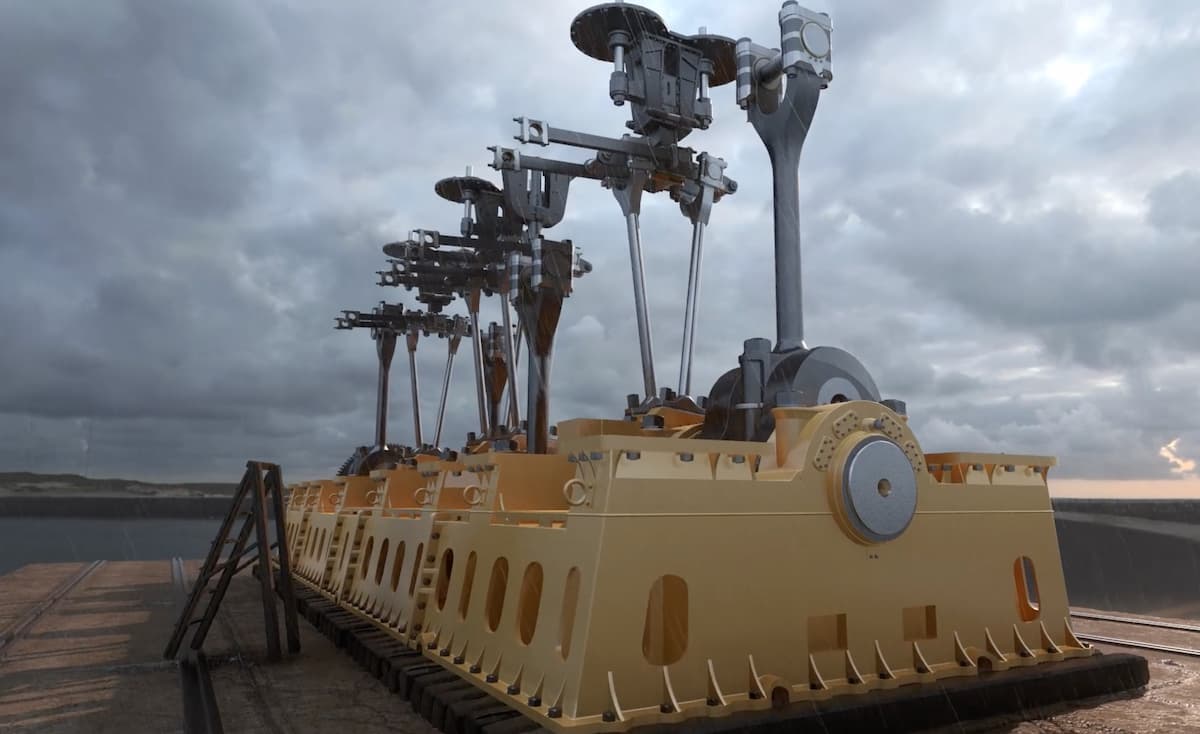The Titanic’s construction began in 1909, and the ship sailed in 1912. She was the most technologically advanced ship in operation at the time. The RMS Britannic and RMS Olympic were Titanic’s sister ships. All of the sisters’ technologies were fairly similar.
Titanic had three propeller-driven engines. It has one low-pressure Parsons Turbine in the centre and two reciprocating four-cylinder triple-expansion steam engines. The two reciprocating engines produced a total of 30,000 horsepower, with the turbine contributing another 16,000 horsepower. The White Star Line had previously used the same engine combination on a previous ship, the SS Laurentic, a major success.
It offered a good balance of performance and speed; reciprocating engines were insufficiently powerful to propel an Olympic-class liner at the desired speeds, while turbines were powerful but produced unpleasant vibrations. Fuel consumption could be reduced, and motive power increased while using the same amount of steam by combining reciprocating engines with a turbine.
The Two Reciprocating Engines
The reciprocating engines measured 63 feet (19 metres) in length and weighed 720 tons apiece. The weight of their bedplates alone was 195 tons. With 159 furnaces, steam was generated by 29 boilers, 24 of which were double-ended and five single-ended. Each of the boilers had a diameter of 15 feet 9 inches (4.80 metres), a length of 20 feet (6.1 metres), and a weight of 91.5 tons.

Burning Coal
The engines were heated by coal, with a capacity of 6,611 tons of coal in Titanic’s bunkers and 1,092 tons in Hold 3. Almost 600 tons of coal had to be shovelled into the furnaces by hand every day, requiring the services of 176 firefighters who worked 24 hours a day.
The ash had to be ejected into the sea at a rate of 100 tons per day. Firefighters were paid well, but the work was demanding, nasty, and dangerous, and there was a significant suicide rate among people who worked in that capacity.
Exhaust Steam
The turbine, which was located aft, received the exhaust steam from the reciprocating engines. The steam was then condensed back into water and reused after passing through a condenser. The propellers were driven by lengthy shafts that were directly connected to the engines.
Each engine had three propellers, one for each engine; the outer (or wing) propellers were the largest, with three manganese-bronze alloy blades totalling 23.5 feet in diameter (7.2 m). With a diameter of 17 feet (5.2 m), the central propeller could be stopped but not reversed.
Electrical plant
The Titanic‘s electrical plant could generate more electricity than a normal metropolitan power station at the time. Four 400kW steam-driven electric generators, plus two 30 kW auxiliary generators, were immediately located aft of the turbine engine, providing electrical power to the ship. Because of their location at the back of the ship, they could operate until the last few minutes before the ship sank.
Why Did The Titanic Sink?
After more than a century, documentaries show that the iceberg was not the sole factor in the ship’s disaster. Instead, the iceberg may have collided with the exact area on the passenger ship’s hull where a coal fire was raging. Researchers claims that fire spontaneously erupted inside one of the Titanic’s massive coal bunkers, significantly weakening a major section of the ship’s hull.